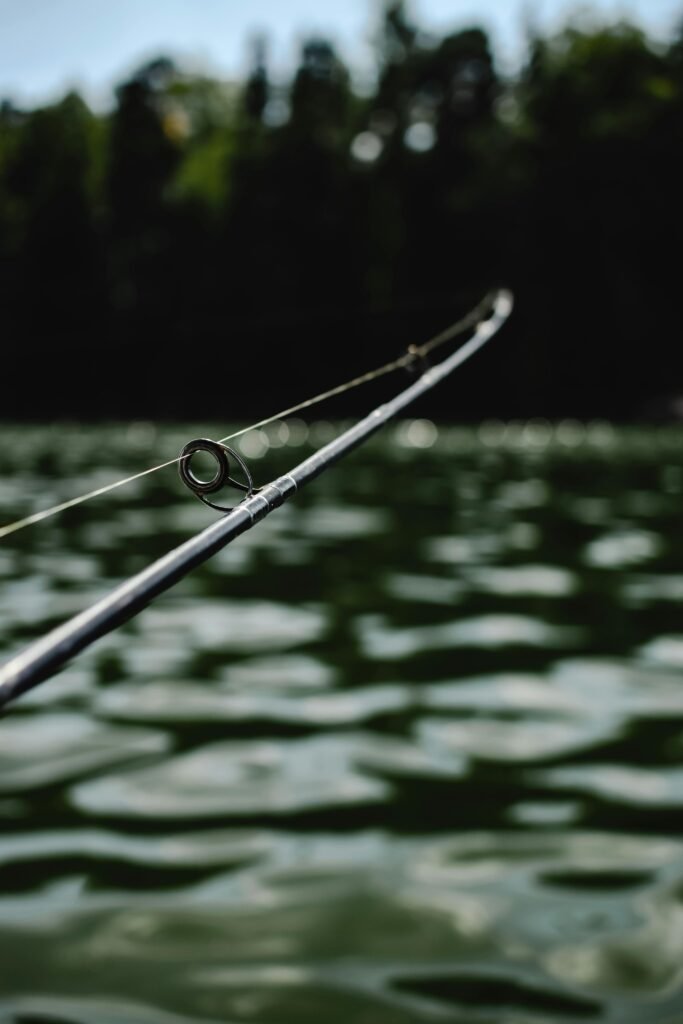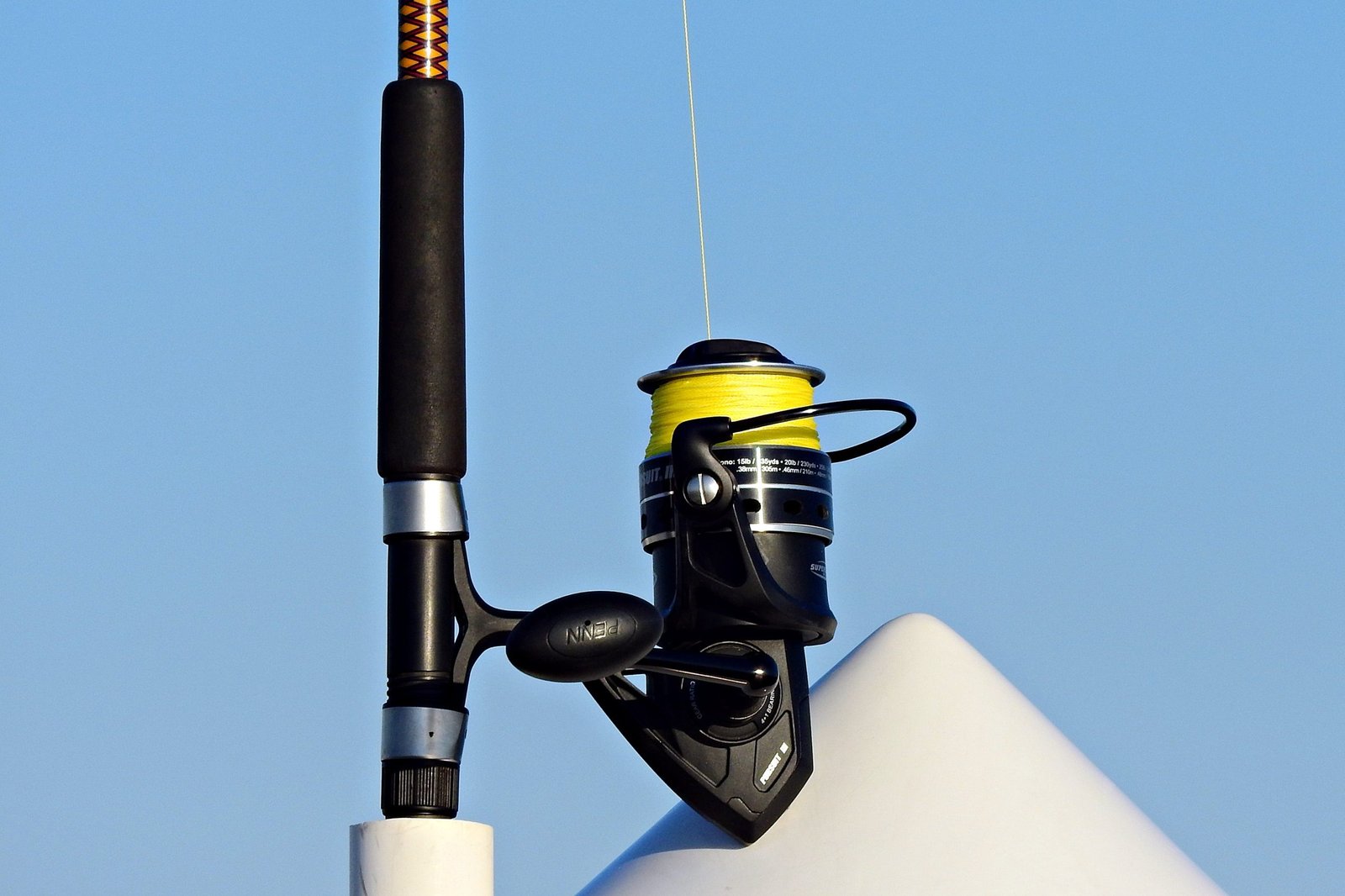
Picking the right fishing line for jerkbaits can make a big difference in your catch. You want a line that helps your lure move naturally and doesn’t scare away fish. Fluorocarbon is often the top choice for jerkbait fishing because it’s nearly invisible underwater and sinks quickly.
Jerkbaits are great for catching bass, especially near steep banks where they like to hide. To start, I just want you to know that the type of line you use affects how deep your lure goes and how well it suspends in the water. These are two main points you’re looking in jerkbait lines.
I’ll only cover lines in this article, but you also need to match your line to your jerkbait rod. A medium or medium-light power rod works well with most jerkbaits. You might want to try different line weights, like 10 or 12 pound test, to see what works best for you. Clear or green colors are good options to keep your line hidden from fish.
Understanding Jerkbait Fishing
Jerkbaits are great for catching bass and other predatory fish. They mimic injured baitfish and can trigger strikes from wary fish. Your line choice affects how well the lure works.
What to Use Jerkbaits for
Jerkbaits work well for catching bass in the upper part of the water. They look like wounded erratic baitfish, which attracts predators. You can use them in clear or stained water.
These lures shine when fish are less active. The stop-and-go action can trigger reaction strikes. Try jerkbaits around structure like rocks or docks.
You can fish jerkbaits at different depths. Some float, while others sink slowly. This lets you target fish at various levels in the water column.
Why Line Choice Matters
Your line choice affects how your jerkbait moves in the water. Fluorocarbon is often best. It sinks and helps get your lure deeper.
Fluorocarbon is also less visible to fish. This can be key in clear water. It has less stretch than mono, giving you better hook sets.
Line size matters too. Lighter line lets your bait dive deeper and move more freely. But it’s obviously less strong. Heavier line gives you more control and strength for big fish.
Consider using a swivel with your line. This helps prevent line twist, which can mess up your jerkbait’s action.
Each Line Type for Jerkbait Fishing

Different fishing line types offer unique benefits for jerkbait fishing. Your choice can impact casting distance, lure action, and fish-catching success. Let’s explore the three main line options for jerkbaits.
Fluorocarbon Lines
Fluorocarbon is a top pick for jerkbait fishing. It’s nearly invisible underwater, making it great for clear water. You’ll get better sensitivity due to its low stretch properties.
Fluorocarbon sinks, which helps get your jerkbait deeper. This can be a big plus when fish are holding in deeper water. A 12-15 pound test is often ideal for most jerkbait situations.
One drawback is that fluorocarbon can be stiffer than other lines. This might affect your casting distance a bit. To fix this, try using a slightly longer rod or a reel with a larger spool.
Monofilament Lines
Monofilament is stretchy and buoyant, which can help your jerkbait suspend better. This is perfect when you want your lure to hang in the strike zone longer.
The stretch in mono can also act as a shock absorber. This helps keep fish hooked during the fight, especially with treble hooks. A 10-12 pound test mono is usually a good choice for jerkbaits.
Mono is also more forgiving if you accidentally hit obstacles while casting. It’s less likely to break on impact compared to fluorocarbon.
Braided Lines
Braid isn’t typically the first choice for jerkbaits, but it has its place. Its thin diameter allows for longer casts, which can be handy in windy conditions.
The no-stretch quality of braid gives you excellent hook-setting power. This can be useful when fishing jerkbaits in deeper water or heavy cover.
If you use braid, consider adding a fluorocarbon leader. This gives you the strength of braid with the invisibility of fluoro. A 30-50 pound braid with a 12-15 pound fluoro leader works well.
Best Jerkbait Lines on the Market
When choosing a line for jerkbait fishing, you have a few great options.

For fluorocarbon, I’m not going to talk without mentioning Seaguar, especially the InvizX. Exceptional sensitivity, low memory, and virtually no stretch, so you can detect subtle bites and get some solid hooksets. You can check the InvizX at Amazon or BassPro.
For floating jerkbaits, monofilament can be a good choice. It’s buoyant and helps keep your bait higher in the water column. Mono also has some stretch, which can be helpful when fishing with treble hooks.
The Sunline Super Natural is a limp and supple line, which allows for smooth, long-distance casts—basically what you want for effectively working jerkbaits. The line’s small diameter further enhances casting distance and helps in achieving a more natural lure action. It also has a good balance of tensile and knot strength, so it’s reliable and durable during aggressive strikes and prolonged fights. You can check the Super Natural on Amazon.

Some anglers like using braided line with a fluorocarbon leader. This setup gives you the sensitivity of braid with the invisibility of fluoro. I won’t recommend a specific model of braided line, but some good options are the Power Pro Spectra Fiber and Sufix 832.
Line strength matters too:
- 8 lb test for clear water and finesse presentations
- 10-12 lb test for general use
- 15 lb test for fishing around cover or in dirty water
Remember to match your line to your rod power and jerkbait weight. This helps you cast better and get the right action from your lure.
Jerkbait Techniques for Seasonal Success
Jerkbaits are great lures for catching bass all year long. You can use them in different ways depending on the season and water conditions.
Spring and Fall Strategies
In spring and fall, bass often chase shad near the surface. Use a floating jerkbait with a slow, twitching retrieve. Cast to points and shallow flats where fish feed.
Try pausing for 3-5 seconds between jerks. This gives sluggish bass time to react. A lighter line like 10-pound monofilament helps your bait suspend better.
When you see fish chasing bait, speed up your retrieve. Quick, sharp jerks can trigger reaction strikes from active bass.
Cold Water Jerkbait Fishing
Winter fishing calls for a slow approach. Use a suspending jerkbait that stays in the strike zone longer.
Make long casts and let your bait sit for 10-15 seconds. Then give it a few twitches and pause again. This mimics a dying baitfish.
Focus on steep banks and points near deep water. Bass often suspend here in cold months. A 12-pound fluorocarbon line balances sensitivity with strength for winter fish.
Summer and Shallow Water Tactics
As waters warm, bass move to shallow cover. Try a shallow-running jerkbait around grass flats and docks.
Use a faster, erratic retrieve to imitate fleeing baitfish. Short, quick jerks with brief pauses work well. This can trigger reaction strikes from aggressive bass.
Early mornings and evenings are prime times. Target shady areas where bass hide from the heat. A floating jerkbait lets you work the bait just under the surface.
Frequently Asked Questions
Picking the right line for jerkbaits is key to success. Let’s look at some common questions about line choices and techniques for jerkbait fishing.
What type of fishing line should I use for jerkbaits to catch bass?
Fluorocarbon is a top choice for bass fishing with jerkbaits. It sinks faster than other lines, which helps your lure get deeper. Fluorocarbon is also nearly invisible underwater, so bass won’t see it.
Try 10-12 pound test fluorocarbon for most jerkbait fishing. This strength gives you good casting distance and lure action.
Is monofilament or braid better for fishing with jerkbaits?
Monofilament can work well for suspending jerkbaits. It floats, which helps keep your lure higher in the water.
Braid isn’t usually the best choice for jerkbaits. It floats too much and can reduce the lure’s action.
What are the advantages of using fluorocarbon lines for jerkbaits?
Fluorocarbon sinks fast, getting your jerkbait to the right depth quickly. It’s also very hard for fish to see. This means bass are more likely to bite your lure.
Fluorocarbon has less stretch than mono. This gives you better hook-sets when a fish strikes.
How does line thickness affect jerkbait performance?
Thinner lines let jerkbaits move more freely. They create less drag in the water. This means your lure can dive deeper and have a more natural action.
Thicker lines can limit how deep your jerkbait goes. But they’re stronger and can help when fishing around cover.
What’s the ideal reel gear ratio for working with jerkbaits?
A medium-speed reel with a 6.4:1 to 7.1:1 gear ratio works well for jerkbaits. This speed lets you work the lure with quick jerks and pauses.
Slower reels make it harder to create the right action. Faster reels can tire you out during long fishing sessions.
How does fishing with jerkbaits in Florida differ in line choice compared to other locations?
In Florida’s clear waters, use lighter, less visible line. 8-10 pound fluorocarbon is a good choice. It will help your jerkbait look more natural to wary fish.
Florida bass see a lot of lures. Using the right line can make your jerkbait stand out from what they’re used to seeing.




